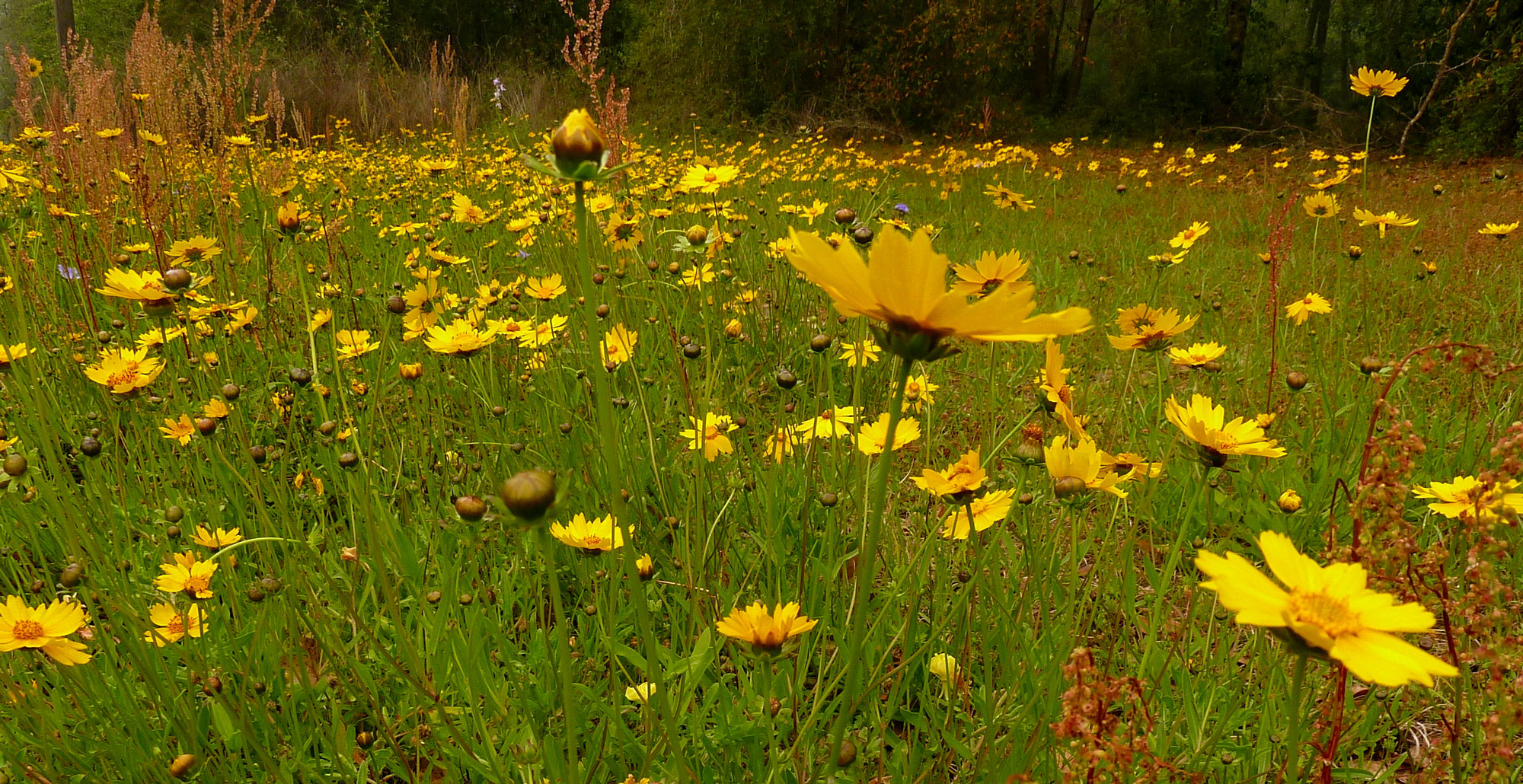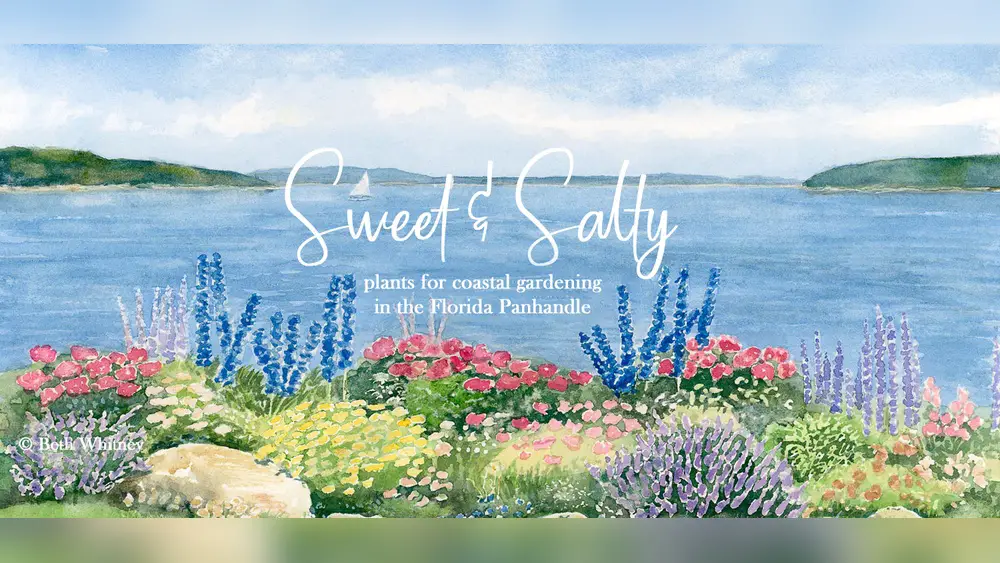If you’re looking to bring vibrant life to your garden in the Florida Panhandle, choosing the right plants is key. You want greenery that not only thrives in this unique climate but also adds beauty and ease to your outdoor space.
Imagine a garden that stays colorful and healthy with minimal effort, even under the hot sun and occasional storms. You’ll discover the best plants suited for the Florida Panhandle’s weather and soil, helping you create a stunning landscape that feels natural and inviting.
Keep reading to find the perfect picks that will transform your garden into a flourishing paradise you’ll love spending time in.
Climate And Soil In Florida Panhandle
The Florida Panhandle offers a unique environment for gardening. Its climate and soil conditions shape what plants thrive best. Understanding these elements helps gardeners select the right plants. This section explores the temperature, rainfall, soil types, and drainage in this region.
Temperature And Rainfall Patterns
The Florida Panhandle has a warm, humid climate. Summers are hot, with temperatures often above 90°F. Winters are mild, rarely dropping below 40°F. Rainfall is plentiful, averaging 50 to 65 inches annually. Most rain falls in summer months through thunderstorms. This climate supports a wide variety of plants, especially those that like warmth and moisture.
Soil Types And Drainage
Soils in the Panhandle vary from sandy to clayey. Sandy soils dominate coastal areas and drain quickly. Clay soils hold water longer but can cause drainage problems. Gardeners must check soil type before planting. Good drainage is crucial to prevent root rot. Amending soil with organic matter improves texture and fertility. Well-drained soils support healthy root growth and plant vitality.
Native Plants For Vibrant Gardens
Native plants bring life and color to gardens in the Florida Panhandle. They thrive naturally in the local climate and soil. Using these plants helps create gardens that stay healthy with less water and care. Native plants support local wildlife like bees and butterflies. They also protect the environment by reducing the need for fertilizers and pesticides.
Choosing native plants ensures your garden looks vibrant year-round. They adapt well to Florida’s heat, humidity, and occasional storms. Below are some great native plant options for different garden needs in this region.
Sun-loving Perennials
Sun-loving perennials flourish in full sunlight areas of your garden. Blanketflower (Gaillardia) offers bright red and yellow blooms. Purple coneflower (Echinacea) attracts pollinators with its large, daisy-like flowers. Coreopsis, known as tickseed, produces cheerful yellow blossoms. These plants return every year and need little care once established. Their long bloom seasons add color from spring to fall.
Groundcovers For North Florida
Groundcovers protect soil and reduce weeds in shady or sunny spots. Sunshine mimosa spreads fast with pink puffball flowers. Asiatic jasmine forms a dense green carpet and tolerates heat well. Frogfruit attracts butterflies and stays low to the ground. These plants help keep your garden neat and healthy. Groundcovers also prevent soil erosion on slopes and borders.
Coastal And Sand Dune Plants
Coastal gardens need plants that resist salty air and sandy soil. Sea oats stabilize dunes with their tall, graceful seed heads. Beach sunflower brightens sandy areas with bold yellow flowers. Saltmarsh cordgrass survives wet, salty conditions near the shore. These plants protect coastlines and add natural beauty. Their tough nature makes them perfect for beachside gardens.
Low-maintenance Plant Choices
Choosing low-maintenance plants is key for gardens in the Florida Panhandle. These plants save time and water. They also thrive in the area’s unique climate. Gardens with such plants stay healthy with little care. This makes gardening simple and enjoyable for everyone.
Drought-tolerant Species
Drought-tolerant plants survive long dry spells. They need less watering, perfect for Florida Panhandle summers. Examples include coontie, muhly grass, and black-eyed Susan. These plants keep gardens green and lively. Their deep roots help them find water underground.
Plants For Rain Gardens
Rain gardens catch and absorb stormwater naturally. They prevent flooding and clean water. Plants like goldenrod, swamp sunflower, and milkweed thrive here. These species love wet feet but handle dry times too. Rain gardens add beauty and help the environment.
Resistant To Pests And Diseases
Plants that resist pests and diseases reduce garden problems. They need fewer chemicals and less effort. Good choices include yaupon holly, beautyberry, and lantana. These plants stay healthy and vibrant longer. They protect themselves against bugs and fungi.
Flowering Shrubs And Colorful Blooms
Flowering shrubs and colorful blooms bring life and charm to Florida Panhandle gardens. They thrive in the warm climate and add vibrant colors year-round. These plants attract pollinators and create beautiful outdoor spaces with ease. Choose varieties that suit the region’s soil and weather for best results.
Hibiscus And Bougainvillea
Hibiscus offers large, bright flowers in red, pink, yellow, and white. It blooms almost all year and loves full sun. Bougainvillea shows off vivid bracts in purple, pink, orange, or white. This shrub grows quickly and handles heat well. Both plants need good drainage and regular watering to stay healthy.
Mums And Other Seasonal Flowers
Mums bring rich colors like gold, orange, and burgundy in fall. They brighten gardens during cooler months. Other seasonal flowers such as zinnias and marigolds add bursts of color in summer. These plants prefer sunny spots and well-drained soil. Rotate seasonal flowers for continuous garden color.
Bird And Pollinator Attractors
Plants like butterfly bush and lantana draw hummingbirds and butterflies. These shrubs bloom brightly and produce nectar. They support local wildlife and increase garden biodiversity. Choose native flowering shrubs for best pollinator support. Place them where birds and insects can easily access the blooms.
Design Tips Using The Rule Of Three
The rule of three is a simple but powerful design tip for gardens. Using groups of three plants or features creates balance and interest. This method helps the eye move naturally through the landscape. It works well in the Florida Panhandle’s unique climate and soil conditions. Applying this rule makes your garden look neat and inviting without effort.
Plant Groupings
Group plants in threes to form natural clusters. Choose three of the same species or mix three different ones. This creates a fuller look without overcrowding. In the Florida Panhandle, use native plants like muhly grass or swamp sunflower. Planting in threes helps plants grow well and stand out.
Hardscape Arrangements
Use the rule of three with stones, benches, or pots. Arrange three hardscape items close together for a pleasing effect. For example, place three stepping stones in a row or triangle. It adds structure to your garden and guides visitors. This technique complements Florida Panhandle’s sunny and humid environment.
Color Coordination
Pick three main colors for your garden palette. Combine shades that match the local landscape, like green, yellow, and purple. Use these colors in flowers, leaves, and garden accessories. Three colors keep the garden lively but not messy. It makes your outdoor space feel fresh and bright year-round.
Creating Focal Points
Highlight a garden spot by grouping three plants or features. Use a large plant with two smaller ones on each side. Or place three colorful pots together in a corner. This draws attention and adds depth to the garden. Focal points help organize space in Florida Panhandle gardens easily.

Credit: www.epicgardening.com
Popular Plants From Local Nurseries
Local nurseries in the Florida Panhandle offer a wide variety of plants suited to the region’s climate. These plants thrive in the area’s heat, humidity, and sandy soils. Choosing from local nurseries ensures plants are healthy and well-adapted. It also supports community businesses and provides access to expert advice.
Top Picks From Tallahassee Nurseries
Tallahassee nurseries feature many popular plants for home gardens. Palms like Sabal Palm and Needle Palm are favorites for their hardiness. Azaleas and camellias bring bright colors in spring. Native grasses such as Muhly Grass add texture and movement. These nurseries often carry seasonal favorites and rare native species. Their plants suit both sun and shade conditions common in the Panhandle.
Recommended Plants From Major Retailers
Major retailers offer a broad selection of easy-to-grow plants. Hibiscus and gardenias are widely available and bloom beautifully in Florida. Bougainvillea is popular for its vibrant flowers and drought tolerance. Many retailers stock groundcovers like Asiatic jasmine for low-maintenance areas. These plants do well in local landscapes and provide quick color. Retailers often have good prices and convenient locations.
Native Vs. Exotic Choices
Native plants naturally grow in the Florida Panhandle. They require less water and care, supporting local wildlife. Examples include goldenrod, swamp sunflower, and milkweed. Exotic plants come from other regions but can thrive here too. Some exotics may need more attention or water. Choosing native plants helps preserve the environment. Combining native and exotic plants creates diverse and vibrant gardens.
Seasonal Care And Maintenance
Seasonal care and maintenance help plants thrive in the Florida Panhandle’s unique climate. Each season brings different needs for water, nutrients, and protection. Understanding these needs ensures healthy growth and vibrant gardens all year. Follow simple routines to keep plants strong and beautiful.
Watering Schedules
Water plants early in the morning to reduce evaporation. During hot summer months, increase watering frequency. Most plants need about one inch of water per week. In cooler seasons, reduce watering to prevent root rot. Check soil moisture regularly to avoid overwatering or drought stress.
Fertilizing Tips
Use slow-release fertilizers for steady nutrient supply. Apply fertilizer in spring and early summer for best results. Choose fertilizers with balanced nitrogen, phosphorus, and potassium. Avoid over-fertilizing, which can harm plants and the environment. Organic options like compost also improve soil health.
Pruning And Pest Control
Prune plants in late winter or early spring to encourage new growth. Remove dead or damaged branches to prevent disease. Inspect plants weekly for pests such as aphids and spider mites. Use natural pest control methods like neem oil or insecticidal soap. Healthy plants resist pests better and grow stronger.

Credit: www.flawildflowers.org

Credit: www.mccooltravel.com
Frequently Asked Questions
What Is The Best Low-maintenance Landscape In Florida?
The best low-maintenance landscape in Florida uses native plants like goldenrod, swamp sunflower, and muhly grass. Rain gardens control water naturally and require little upkeep. These plants thrive in Florida’s climate, reducing watering and care needs while enhancing natural beauty.
What Is The Rule Of 3 In Landscaping?
The rule of 3 in landscaping groups plants or elements in threes for balance and visual appeal. It creates natural flow and harmony.
What Plants Can Survive In The Heat In Florida?
Heat-tolerant plants in Florida include hibiscus, bougainvillea, plumeria, coontie, and muhly grass. These thrive in hot, humid conditions.
What Flower Blooms All Year Round In Florida?
The hibiscus flower blooms year-round in Florida, thriving in warm, sunny climates with regular watering and care.
Conclusion
Choosing the right plants helps your Florida Panhandle garden thrive. Native species handle heat, humidity, and soil well. They attract local wildlife and need less water. Use a mix of flowers, shrubs, and grasses for color and texture. Plant in groups of three for a natural look.
With simple care, your garden will stay green and healthy year-round. Enjoy the beauty and ease of native Florida plants. Start planting today and watch your garden flourish.

